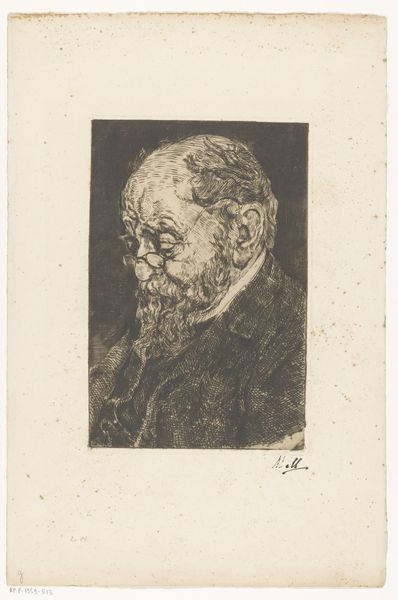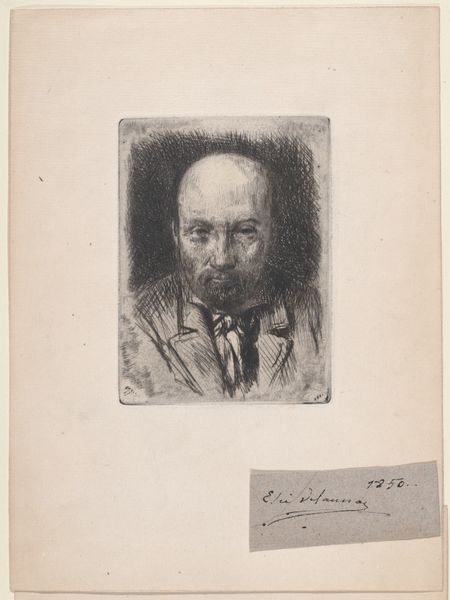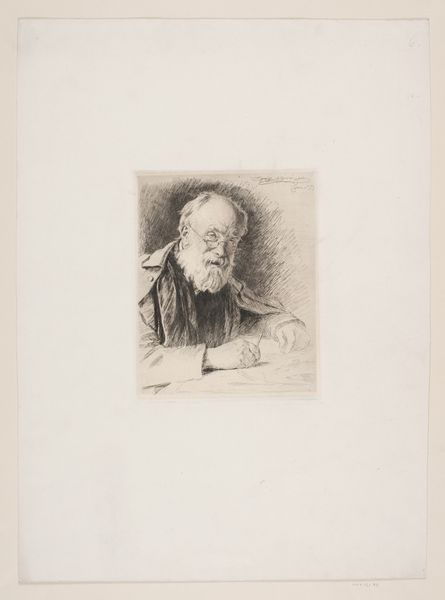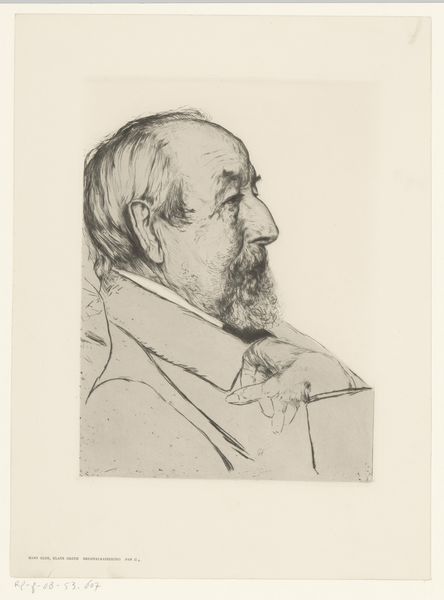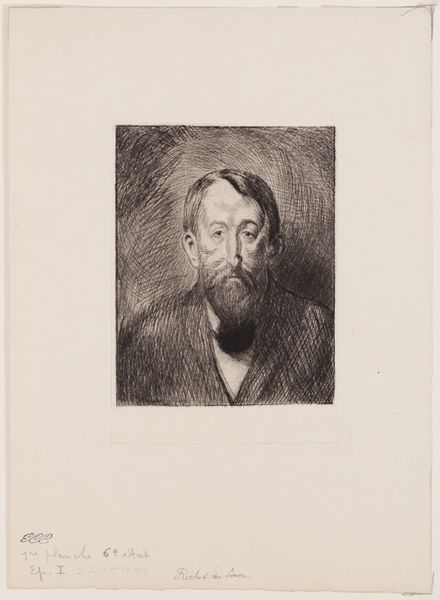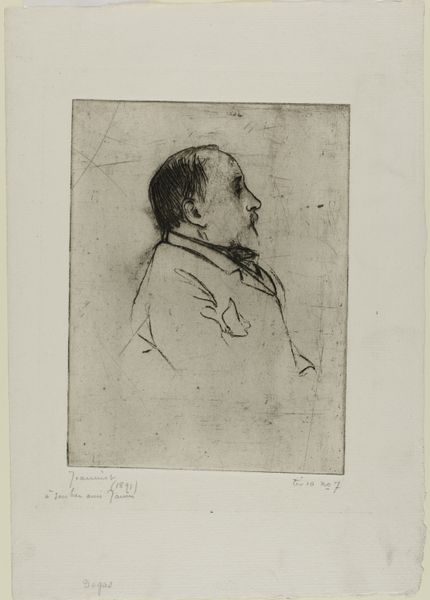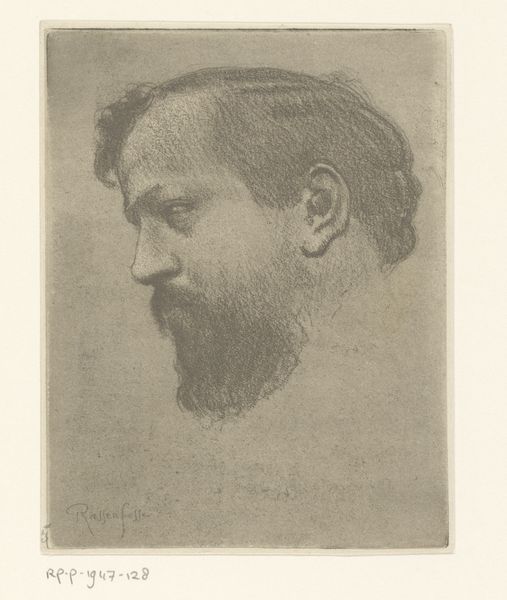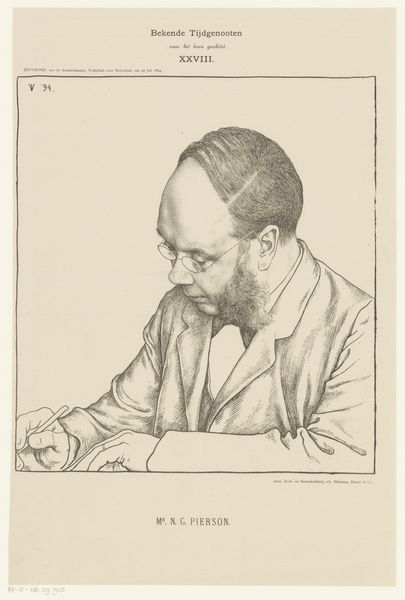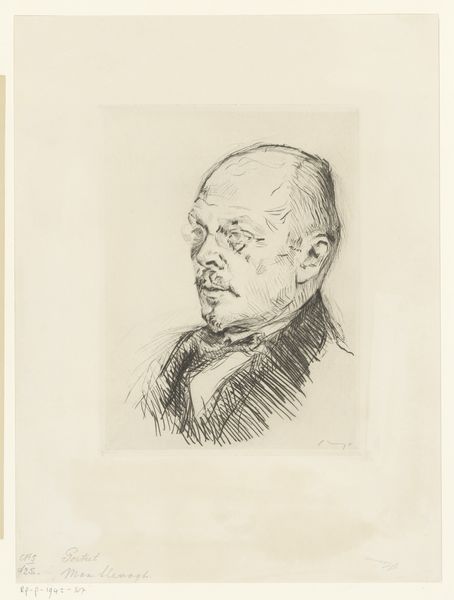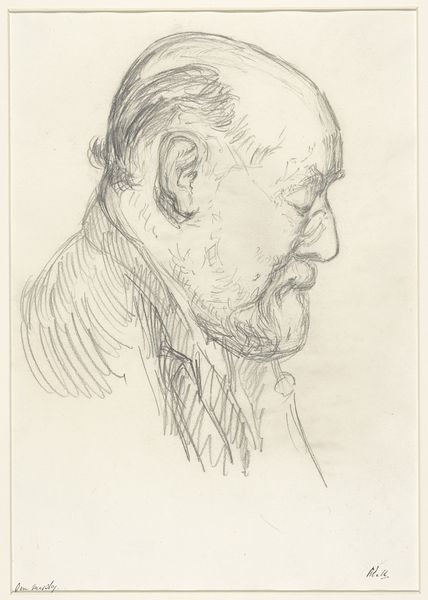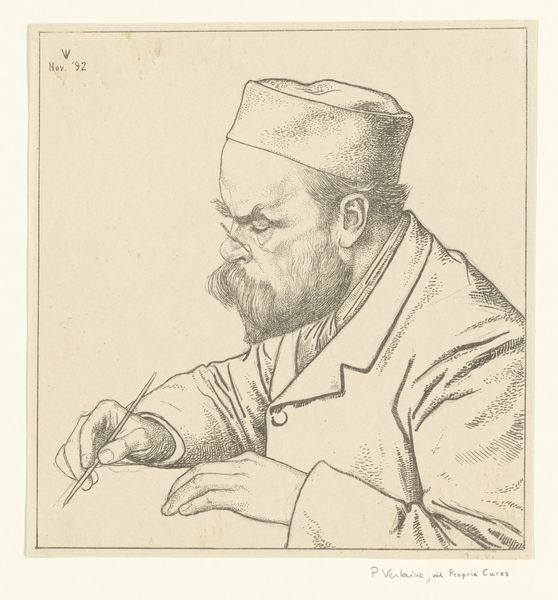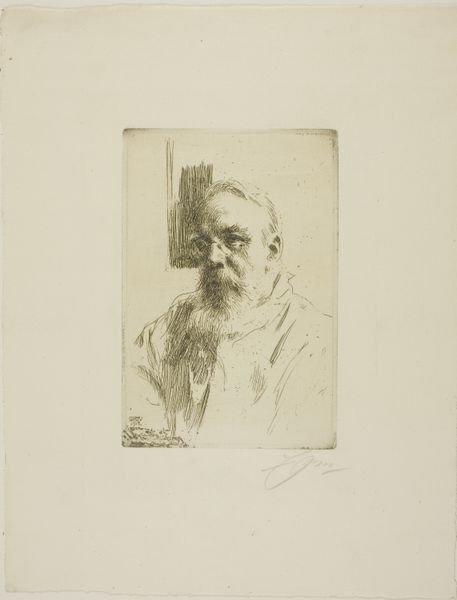
drawing, print, etching, pen
#
portrait
#
drawing
# print
#
etching
#
pencil drawing
#
pen
#
realism
Dimensions: height 146 mm, width 122 mm
Copyright: Rijks Museum: Open Domain
Curator: Here we have Marcellin Desboutin's 1879 etching, "Portret van Emile Zola," a striking depiction of the celebrated French novelist. Editor: My initial gut feeling? A brooding intellectual. He looks like he's on the verge of a breakthrough or maybe just battling writer's block! There’s something intensely personal in the gaze, as if he's peering right into your soul. Curator: Indeed. This etching captures Zola at a pivotal moment in his career. Desboutin, himself a fascinating figure, captured many artists and writers of his era, playing a role in recording this segment of cultural history. Note his expert use of line in the drypoint technique which adds immediacy and captures light in the etching process. Editor: The scratchy lines create a beautiful contrast. Like he pulled it together with pure feeling in an afternoon, capturing an insightful essence and that perfectly flawed human quality! But what resonates is the pensive quality – it speaks of creativity, of course, but also struggle. Is there even a bit of melancholy there? Curator: Given Zola's naturalist literary style, focused on harsh realities and societal critique, it's perhaps fitting to perceive that melancholy. The historical reception of Zola and his novels was fraught with controversy, deeply impacting French society and politics of the late 19th century. Desboutin was working with Zola and others within a complex and contested political field. Editor: I feel like I am looking at a quiet revolutionary, a man about to pen a sentence that could topple governments, even in the way he is wearing those spectacles! There's something deeply human and approachable in that thoughtful pose. It’s as if the artist and author are united by the sheer, magnificent pain of creation. Curator: That’s a compelling reflection. Considering Desboutin’s role as an artist within that particular community, your sentiment resonates beyond this single portrait, speaking to the shared experience amongst his peers. The portrait stands as a document of those relationships, revealing Desboutin's involvement in this movement of intellectuals in nineteenth-century France. Editor: And it makes you think, doesn't it? How art immortalizes not just the famous face, but also those hidden moments of contemplation, those silent battles fought within the minds of the creative individuals that change the world. Curator: A valuable consideration. This image really does showcase how portraiture plays a part in constructing public and historical perception of individuals within powerful social circles.
Comments
No comments
Be the first to comment and join the conversation on the ultimate creative platform.
